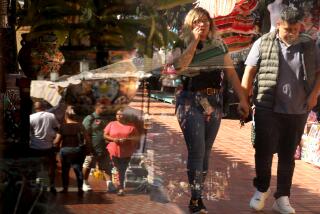
The winter surge of COVID-19 brutalized much of Los Angeles County, sending case rates and deaths skyrocketing for weeks.
But in some neighborhoods, the pandemic’s wrath was barely felt.
In West Hollywood, Malibu and Playa del Rey, infection rates actually fell, or increased much less than elsewhere, according to a Times data analysis of more than 300 neighborhoods and cities across the county.
Those communities’ relative good fortune can be explained by some obvious demographic factors, such as Malibu’s low housing density and West Hollywood’s large population of singles able to work from home.
But residents and city officials also point to other factors they believe helped keep the pandemic under control: sea breezes, easy access to open space for exercising, a strong culture of mask compliance and, crucially, limited contact with other people.
“I am keenly aware that I am in the minority of people,” said Shayna Moon, a project manager for a technology company who works from home in Playa del Rey, where case rates declined during the surge. “So few people have been protected in the way that people in my age and income bracket and education have been.”
The data analysis underscores the wrenching inequities unveiled by the pandemic in L.A. County and beyond.
Some areas — the Eastside, eastern San Fernando Valley, South L.A. and southeastern part of the county — have been devastated by the coronavirus. Many of these are low-income communities with a high number of residents who are essential workers, putting their lives at risk at supermarkets, manufacturing firms and other businesses. They are far more likely to live in overcrowded conditions, bringing the coronavirus home from work and spreading it among the household.
Hard-hit areas lack the assets — vast recreational open space and a population with the economic means to stay home, get goods delivered and work remotely — of affluent communities that fared better. It was not just living in sprawling single-family homes rather than denser apartments that made the difference, but additional economic and lifestyle factors.
When taken as a whole, these factors paint a tale of two surges — showing that the luxuries of location and privilege play an important role in one’s ability to avoid the coronavirus.
This story, which examined weekly case rates between Nov. 15 and Jan. 15, is about some of the places the holiday surge passed over.
Malibu
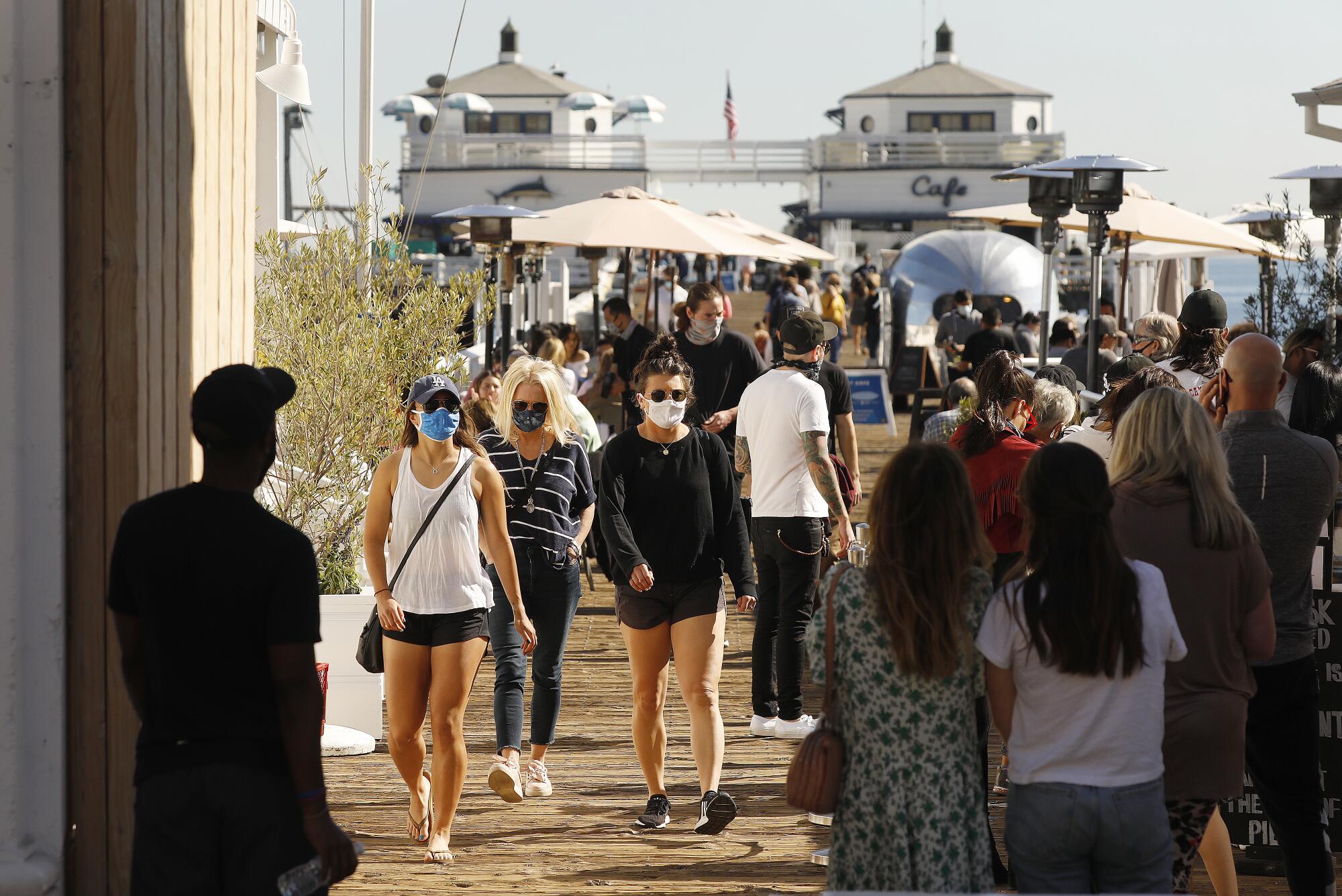
In the courtyard of a Malibu shopping plaza last week, Renee Henn, 27, sat on a bench in the sun as people milled around sipping coffee, chatting over lunch at physically distanced tables and popping into a Pilates studio.
Henn, who lives in a house near the beach with her father and his girlfriend, has been able to work remotely for a local tech company during the pandemic. She said lack of density, lifestyle factors and even the Malibu climate could help explain the area’s relatively tame COVID-19 numbers.
“We’re near the water, and the sea air heals,” she said. “Everybody is outside all the time.”
While L.A. County’s coronavirus case rate exploded by 450% during the surge, the case rate for the city of Malibu only doubled. That places it near the top of the list of communities least affected by the surge.
Pricey real estate may have helped to insulate Malibu. The median home value in the seaside community is $2 million, according to census data, and many of the essential workers at restaurants, grocery stores and other businesses in its compact commercial district live outside the area.
The city’s affluent residents were able to pivot to working remotely soon after the pandemic started, and most City Hall services and meetings immediately transitioned to online.
“A lot of people in Malibu were able to adjust to working from home,” said the city’s mayor, Mikke Pierson, “and I think it made a huge difference compared to all the people that had to head out on 9-to-5 jobs that required them to be out among other people.”
Pierson noted that Malibu does not have nursing homes or long-term care facilities (although there have been efforts to establish some), which have been hubs for outbreaks of the virus.
But as a tourist destination, Malibu poses some risks. With up to 15 million visitors a year, Malibu considers crowding on beaches and trails to be a “real concern” during the pandemic, said city spokesman Matt Myerhoff.
To encourage healthy behavior, the City Council in November passed an ordinance requiring the use of masks. It is enforced with a $50 fine that can be avoided if the person in violation complies immediately. The city also placed digital signage along highways encouraging the use of face coverings in public.
“The city has been using all of its communications channels to repeat and reinforce the [Los Angeles County] public health officials’ safety recommendations [and] health orders,” Myerhoff said.
Additionally, the area has plenty of open space. Julia Bagnoli, 36, lives in an “Airstream in the woods,” she said, in the hilly area of Topanga just east of Malibu. She has a number of jobs — including alcohol treatment counseling and teaching yoga at a children’s school — but her primary occupation is Vedic astrology, which she has been able to practice remotely throughout the pandemic.
Compared with her woodsy home, “the city is just more crowded,” she said while playing with her puppy Usha at a shopping plaza on Pacific Coast Highway. She noted that there are only about 10,000 people in Topanga and fewer than 14,000 in Malibu. “There’s like 14,000 people in a four-block radius in Hollywood. We’re just more spread out.”
West Hollywood
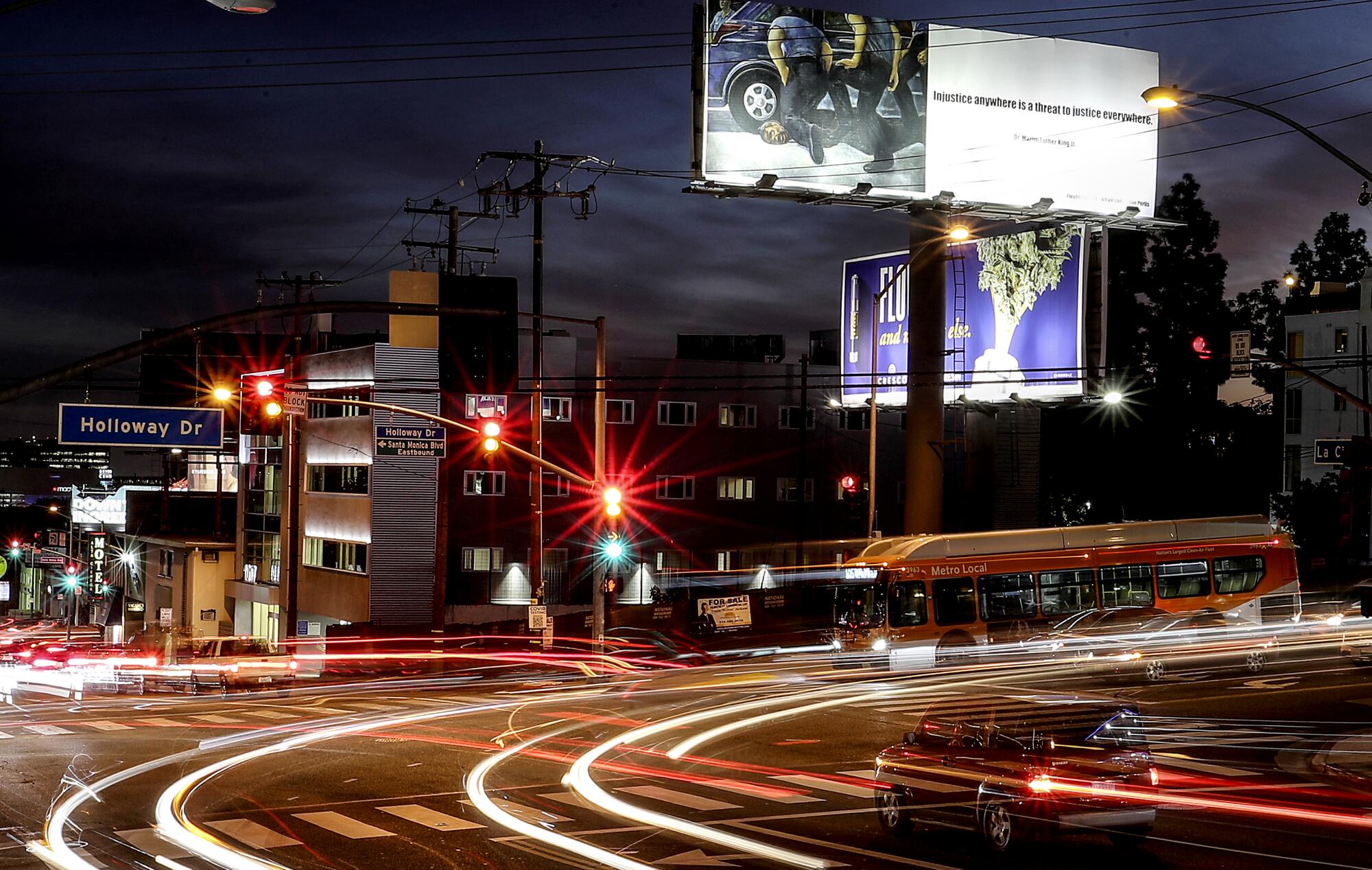
West Hollywood, in some ways, would seem a prime candidate as a superspreader locale. The city jams 36,000 people into less than 2 square miles.
But while other densely populated areas in the county, including parts of South L.A. and the San Gabriel Valley, saw coronavirus case rates skyrocket by more than 1,000% during the surge, West Hollywood saw its cases climb by only 46%.
The main difference: household size. West Hollywood is a place where many residents live alone, according to city data. And many of the area’s residents have been able to work from home throughout the pandemic.
Those options are off the table for many of the essential workers and people who depend on multigenerational housing in parts of L.A. that were hit hard by the surge.
Dex Thompson, a 33-year-old actor, said he is the sole occupant of his house near the busy intersection of Fairfax Avenue and Santa Monica Boulevard and has been going on “Zoom auditions” since the start of the pandemic. Even the decision to audition has been deliberate, he said.
“There’s a little bit of narcissism here,” Thompson said of West Hollywood, as he snacked on sushi and beet juice outside Whole Foods. “Everyone feels a little important, like, ‘I’m about to be somebody, and you’re not, so am I going to risk my life for you or for this opportunity?’”
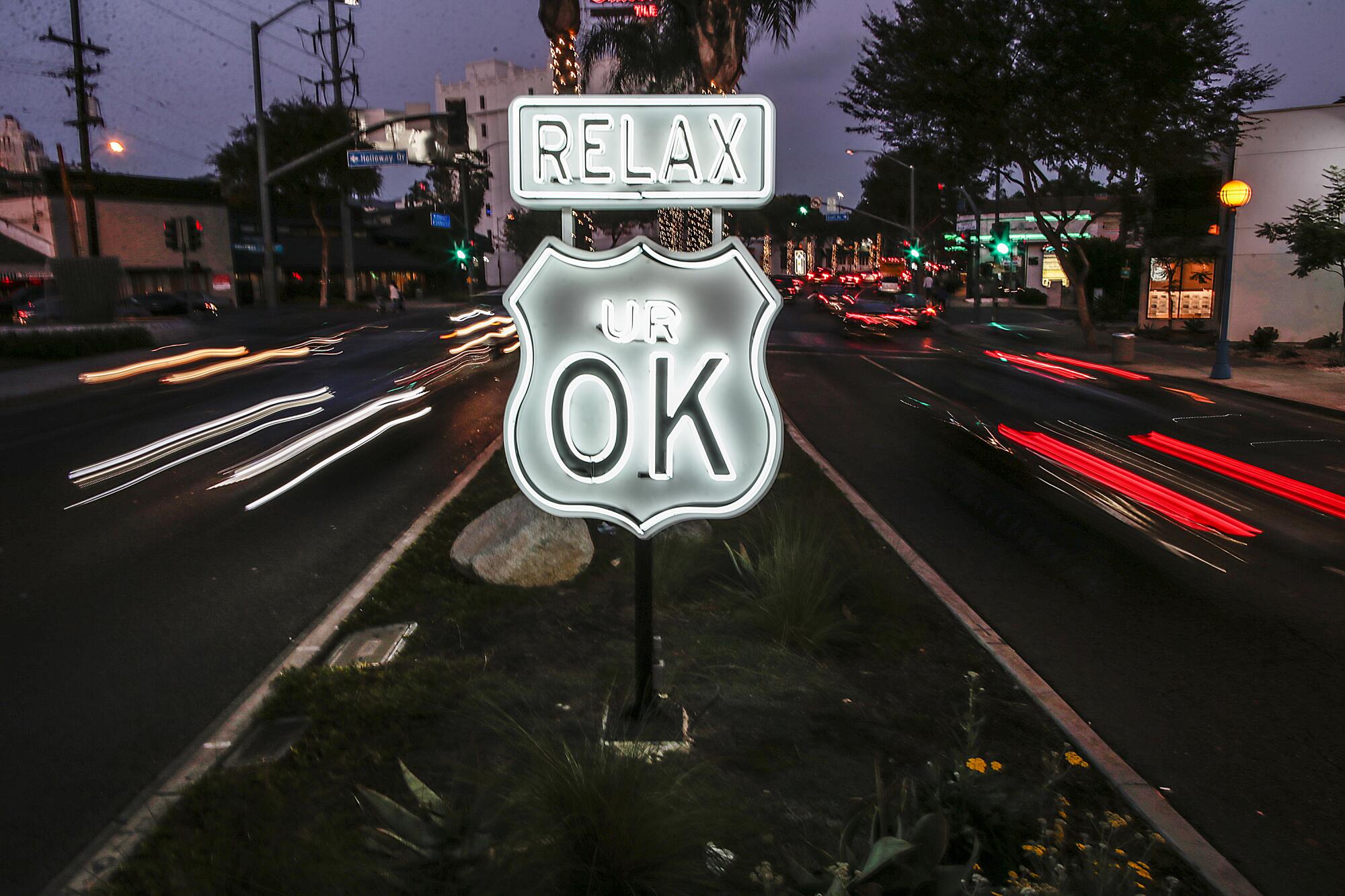
That luxury — of housing, work and choices — has, in many ways, been a determining factor amid the pandemic.
Lisa Cera, a stylist, said she and her business partner have managed to keep their business afloat by working out of her apartment.
Like Thompson, she is the sole occupant of her home, which is around the corner from West Hollywood’s commercial corridor. She has three interns — two of whom work remotely — and is tested for the coronavirus any time she has to step onto a film set.
Although Cera has friends on the East Coast who have contracted COVID-19, she said she didn’t know anyone in West Hollywood who has had it.
Keeping fit may have helped her and others in her neighborhood to stay healthy during the pandemic, she said. She hikes in Runyon Canyon almost every day and is careful to pull her mask tighter when someone gets close to her on the popular trail.
Though ocean breezes and gourmet juices may seem like less-than-quantifiable factors, there is a case to be made for their correlation to health and avoidance of COVID-19.
Lifelong, systemic lack of access to primary healthcare and nutrition, as well as environmental factors like pollution, can contribute to a higher likelihood of illness and death from the virus, according to the Centers for Disease Control and Prevention. Many of those factors have long plagued the poorer, denser and more diverse parts of the county that were hit hardest during the surge.
West Hollywood’s network of social programs may have also made a difference. The city provided free grocery and meal delivery for vulnerable residents, expanded assistance for renters and small businesses and developed advanced technological outreach and communication efforts, according to city spokeswoman Lisa Belsanti.
Additionally, West Hollywood, like Malibu, passed an ordinance requiring the use of masks in public.
Some residents said the combination of factors worked.
“We’re a small city,” said Douglas, 49, a real estate developer who declined to give his last name. “West Hollywood is good at communicating policies and getting the information out.”
Playa del Rey
In Playa del Rey, an affluent beachfront neighborhood near Los Angeles International Airport, the pandemic has barely registered.
In fact, infection rates declined by 25% during the two-month period identified by The Times.
The area in the heart of Silicon Beach doesn’t have Malibu’s spaciousness, but it seemed to have demographic advantages. The coastal community is largely residential, with a mix of single-family homes and apartments, and it has fewer crowded households than most neighborhoods and cities in the county, according to a Times review of data from the U.S. Census Bureau.
It’s also among the most affluent — and has a high percentage of white-collar workers, meaning many presumably have the advantage of working from home.
Moon, the project manager and a Midwest transplant to the neighborhood, has been cautious about following public health guidelines, she said, expressing gratitude that her employer has allowed her to work from home since April.
Moon said she doesn’t step foot outside her apartment without a mask — and rarely ventures farther than neighborhood groceries and drugstores.
“I assume very little risk on a daily basis. I’ve basically been insulated from it because of the demographic that I’m in,” she said.
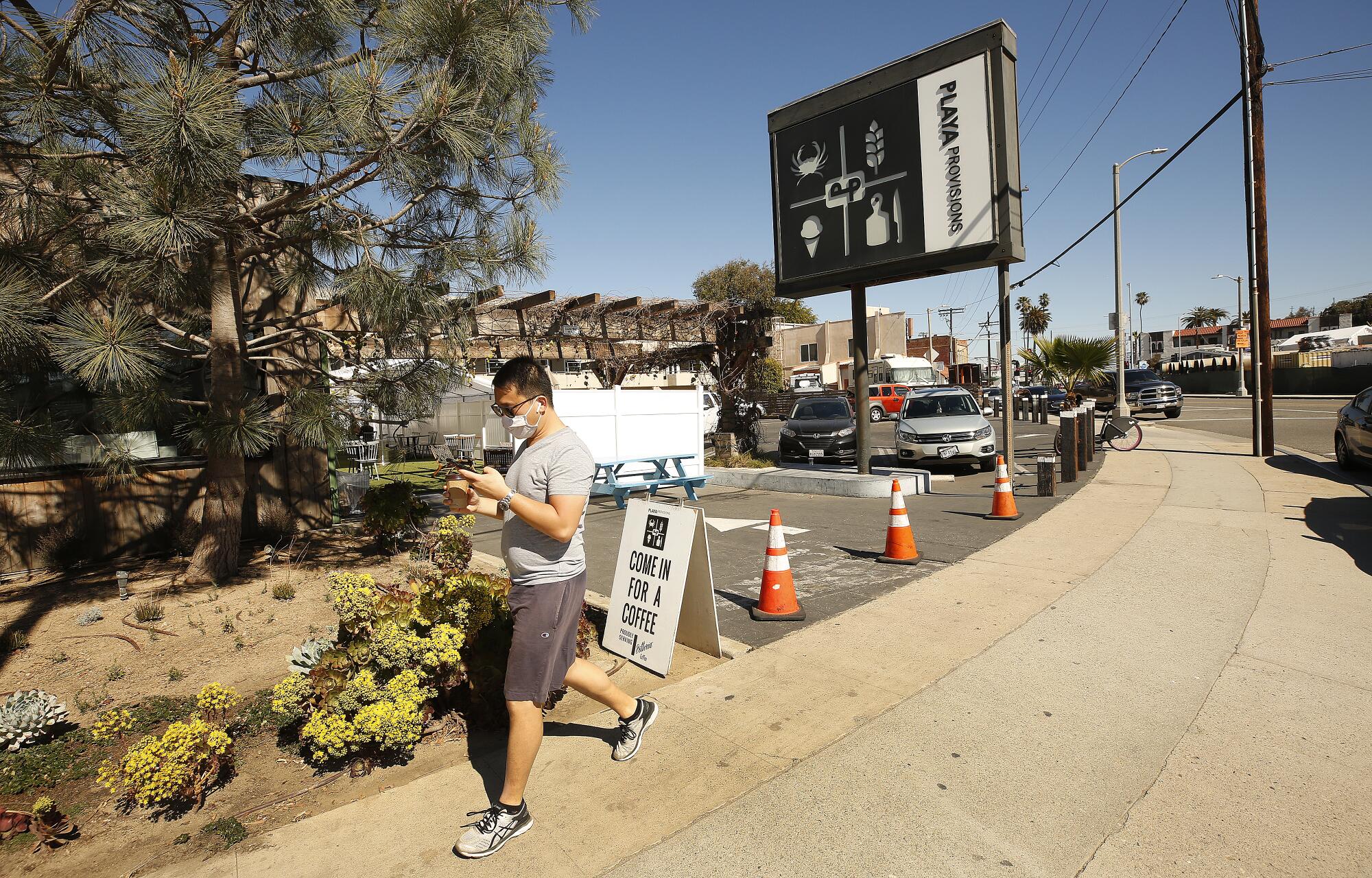
But the public health precautions — such as stay-at-home orders and intermittent bans on indoor and outdoor dining — have taken their toll on the neighborhood.
At Playa Provisions, a well-known eatery just off the beach, business is down by 75%.
“We love being that go-to staple and dependable location for people to come,” said Brooke Williamson, the restaurant’s co-owner and co-chef. “Every moment of this has been so painful.”
She and her staff never relaxed their safety precautions, even as the neighborhood fared better than other parts of the county, she said.
“I tried not to think about the area not being dangerous. I always treated my restaurant and staff and family as if we were in the highest-risk areas to try to avoid being relaxed in any way.”
While Williamson talked, more than a dozen people walked by her restaurant. All wore masks.
More to Read
Start your day right
Sign up for Essential California for news, features and recommendations from the L.A. Times and beyond in your inbox six days a week.
You may occasionally receive promotional content from the Los Angeles Times.

